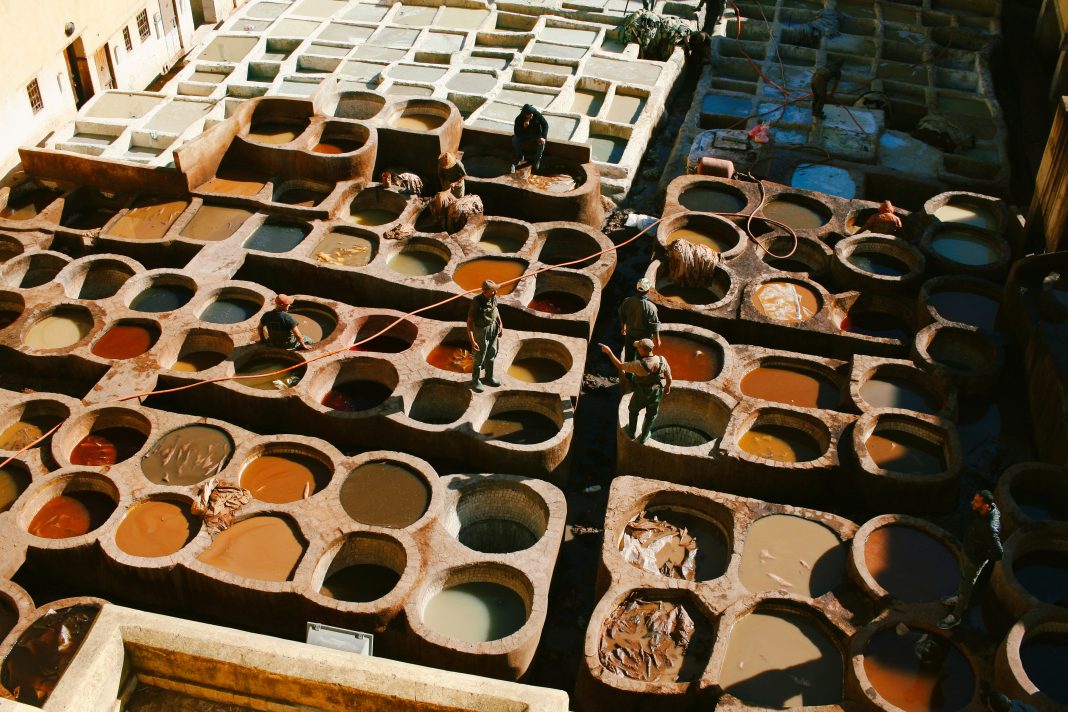Victor Durand from Ever Dye sheds light on the challenges surrounding the fastness of natural textile dyes. Dive into his insights, and learn why this issue is crucial for the future of the textile industry
For thousands of years, humans have relied on natural dyes to colour textiles. Archaeological evidence shows that as early as 2000 BCE, civilisations in Egypt, the Indus Valley, and China were extracting pigments from plants, minerals, and insects. Madder roots yielded deep reds, indigo leaves gave blues, and saffron or turmeric produced vibrant yellows.
In many societies, colours carried cultural and political significance. For example, imperial purple, derived from the murex sea snail, was reserved for elites due to its rarity and high cost. Another example is blue, which was considered a colour for royals starting in the 13th century.
For most of human history, these natural sources were the only way to dye fabrics. Skilled dyers refined techniques involving multiple vats, plant-based mordants, and layered dye baths to achieve lasting shades. Yet even with such craftsmanship, the fastness, which is the resistance of a colour to fading, bleeding, or changing, remained inconsistent.
When synthetic dyes emerged in the mid-19th century, beginning with mauveine in 1856, they quickly surpassed natural dyes in consistency and durability. Today, renewed interest in sustainability has revived natural dyes, but their fastness limitations still pose challenges.
What does fastness mean?
Fastness is measured in several categories:
- Light fastness – resistance to colour fading under sunlight or artificial light.
- Wash fastness – resistance to colour loss or bleeding during laundering.
- Rubbing fastness – resistance to colour transfer when rubbed, wet or dry.
- Perspiration fastness – resistance to colour change from sweat.
It is important to note that one dye may perform well in one category yet poorly in another. Especially for the clothing industry, it is important that all standards are met to produce high-quality consumer goods that are durable.
Why natural dyes often struggle
- Weak fibre bonds:
- Many natural dye molecules attach to fibres through weak physical forces, making them more prone to washing out.
- Light sensitivity:
- Plant-based dyes such as turmeric can degrade quickly due to UV light, causing fading. This can alter the colour in the long term for furniture or clothing items exposed to sunlight.
- Source variability:
- The same plant can produce slightly different dye chemistry depending on soil, climate, and harvest time, affecting fastness as well as colour and shade, making it harder to scale on an industrial level.
- Fibre affinity:
- Synthetic fibres can hardly be dyed with natural dyes, and as they represent the majority of the market nowadays, it would be hard to replace synthetic dyes depending on the fibre type.
- Raw material availability:
- Natural dyes come from plants, insects, or minerals. Producing tons of fabric means needing massive amounts of plant matter. To dye 1 kg of fabric with madder roots, you might need 100–200 g of dried roots. At the industrial scale, the amount of dyes needed would require vast amounts of natural resources as well as a lot of land to grow some materials.
- Added mordants:
- Mordants, mostly metallic salts such as alum, iron, or copper, help bond dye molecules to fibres. They can improve both wash and light fastness. However, heavy-metal mordants like chromium are toxic and restricted under modern eco-textile standards. Even “safe” mordants such as alum do not solve fastness problems for all dyes, which can still cause problems in the long run.
Commercial impact
In large-scale textile production, poor fastness can lead to different issues:
- The shorter garment lifespan is due to colours fading quickly.
- Care restrictions as garments may require gentle washing or sun avoidance.
- Higher production costs due to extra dyeing steps or stronger mordants needed.
- Market limitations include that it is unsuitable for high-exposure applications like outdoor garments or upholstery.
Balancing sustainability and performance
Natural dyes reduce reliance on petrochemical-based synthetics and often use renewable resources. Yet if garments fade quickly and require frequent replacement, the environmental benefit can be undermined. A balanced approach might use natural dyes where durability demands are moderate, such as luxury fashion, artisanal products, or ceremonial textiles, while reserving synthetics for applications where high fastness is essential.
In recent years, the textile industry has increasingly turned its attention to developing better alternatives to traditional natural dyes, seeking to bridge the gap between sustainability and performance. Advances in bio-based dyes, engineered through microbial fermentation or green chemistry, represent one promising direction.
Microbial dyes can be obtained through the use of microorganisms such as bacteria, yeast, or algae that are capable of producing pigment molecules similar to those found in nature. Compared to conventional cultivation of dye plants, this approach may rely less on agricultural resources and can be carried out in controlled systems, which may help reduce environmental impact while providing greater consistency in quality.
Other methods include proprietary dyeing pigments and process developped by French startup; EverDye. They develop solutions that drastically reduce energy and water consumption during the dyeing process, offering industrial partners colours that bond more quickly to fibres without harmful mordants.
These new methods allow dyeing mills to dye at room temperature in existing settings, therefore reducing the need for intensive energy usage during the dyeing process with no investments, resulting in a reduction of GHG emissions up to 89% compared to standard dyeing processes.
Together, these innovations suggest that the future of textile dyeing will not depend on a single solution but rather a spectrum of approaches, combining biotechnology, green chemistry, and advanced treatments to ensure that colour in fashion and textiles is both vibrant and enduring while aligning with global sustainability goals.


